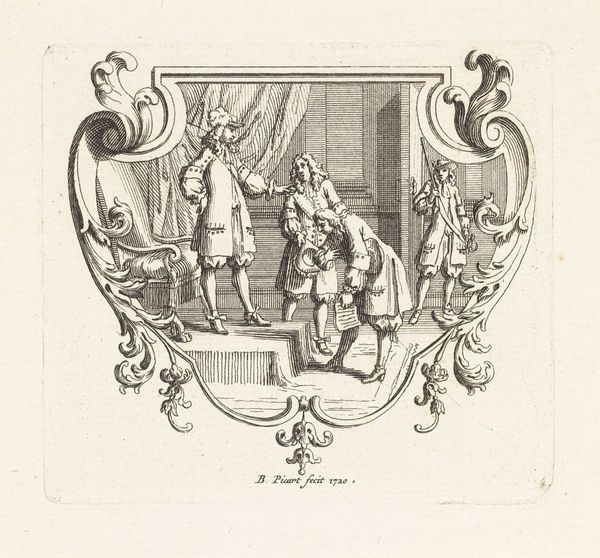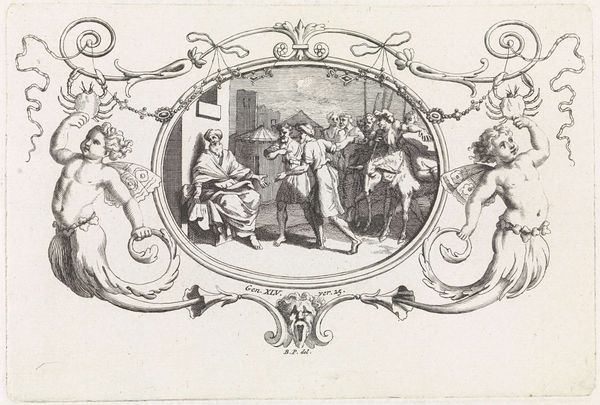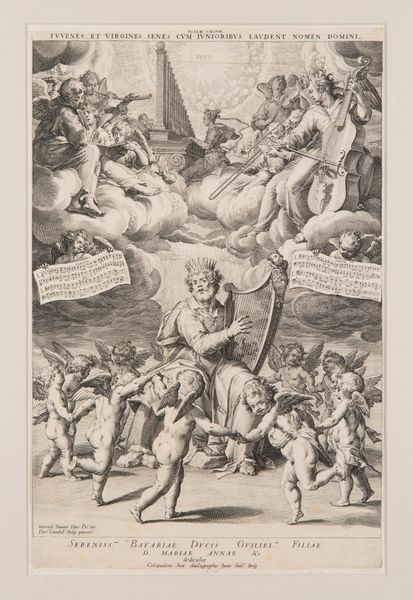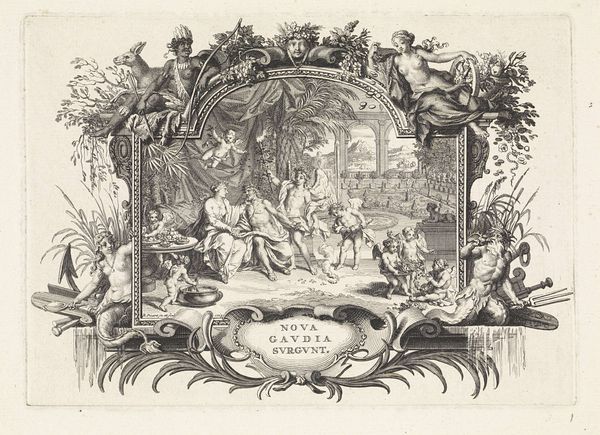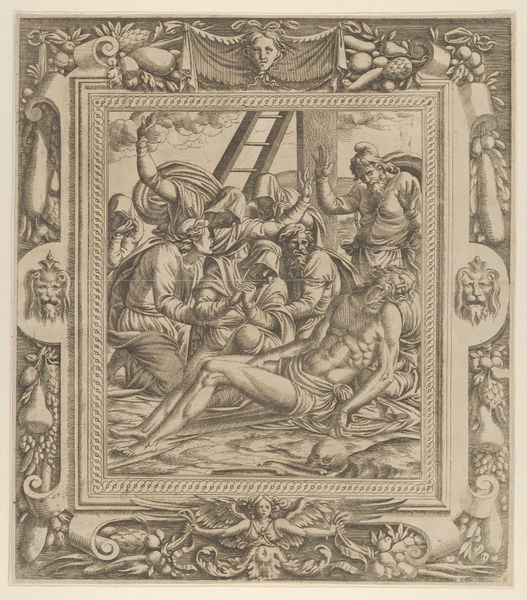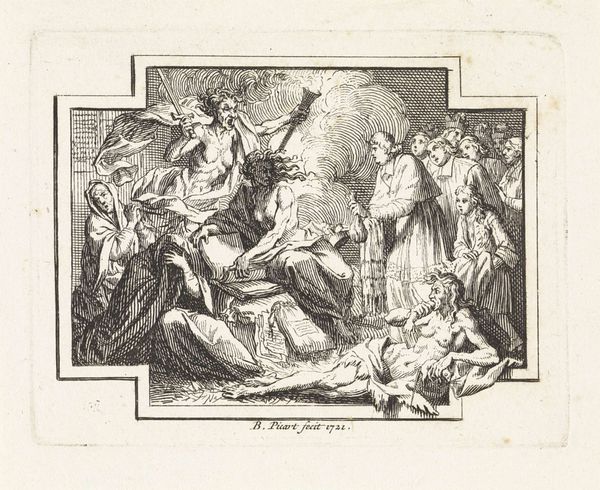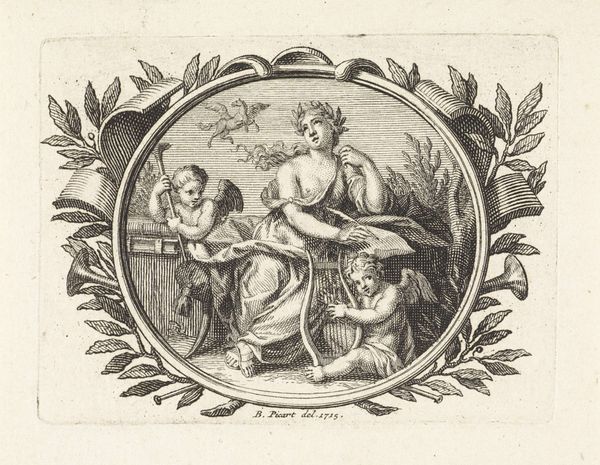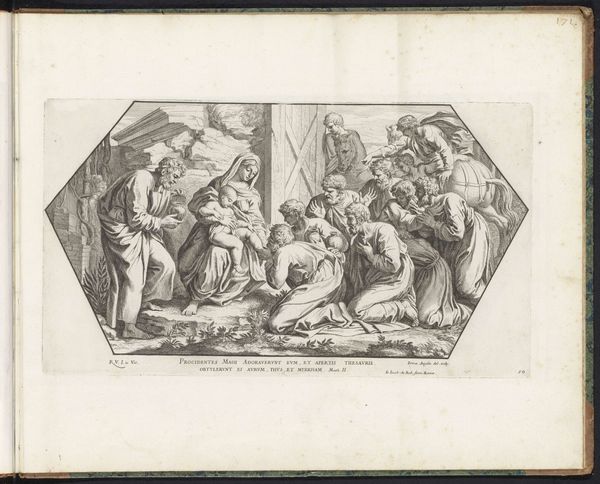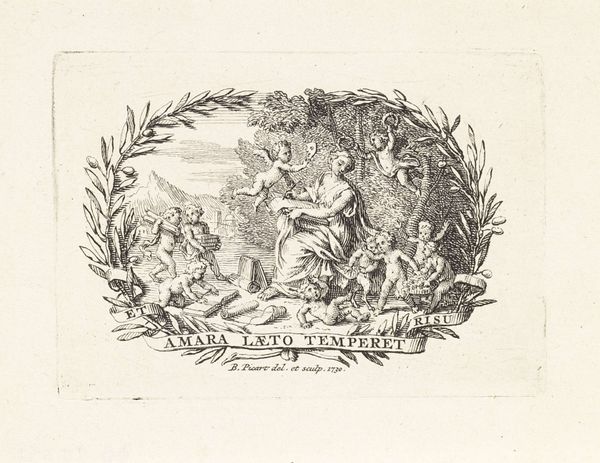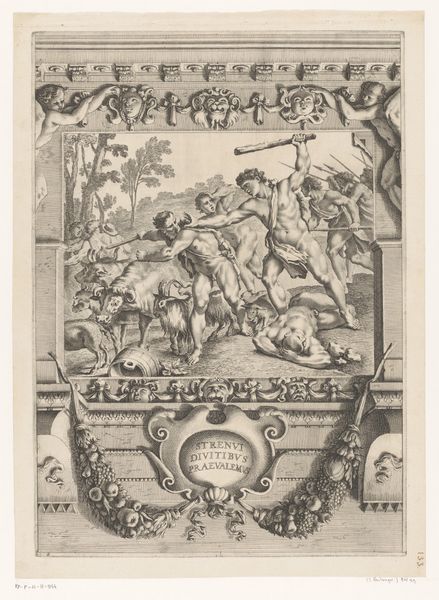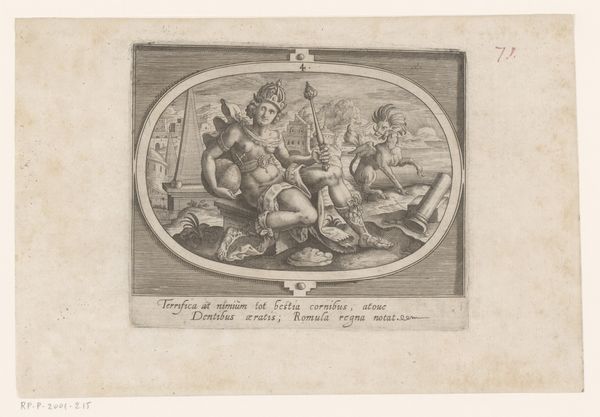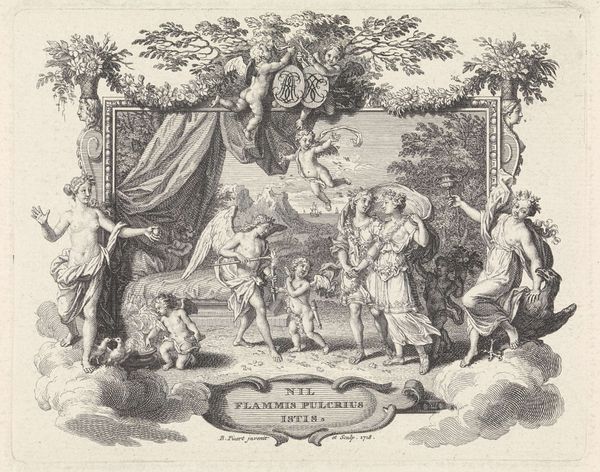
print, engraving
#
comic strip sketch
#
baroque
#
mechanical pen drawing
# print
#
pen illustration
#
pen sketch
#
ink line art
#
personal sketchbook
#
pen-ink sketch
#
pen work
#
sketchbook drawing
#
genre-painting
#
storyboard and sketchbook work
#
engraving
Dimensions: height 62 mm, width 70 mm
Copyright: Rijks Museum: Open Domain
Curator: It feels surprisingly chaotic for something rendered with such precise lines, doesn't it? Almost like a stage set about to collapse. Editor: Indeed! The print we're looking at, titled "Waarschuwing tegen een losbandig leven" or "Warning Against a Dissolute Life," was created in 1721 by Bernard Picart. Given the didactic title, it's easy to interpret through a critical lens examining the dangers of unregulated excess. Curator: That’s interesting because, visually, the engraving highlights what I perceive as a deliberate contrast. The main figure reclines amidst symbols of leisure—instruments, playing cards, a chessboard—things denoting leisurely pursuits. Yet, these very items, meant for pleasure, appear discarded, almost carelessly strewn around. What's the medium and engraving process like? The composition gives me ideas. Editor: Picart was masterful in etching and engraving; he primarily utilized those techniques to render very fine, clean lines. This allows him to convey detail with an almost clinical precision, despite the work’s more expressive or illustrative qualities. It was after all meant to be easily and quickly printed, an indictment for mass distribution. Curator: The contrast between the technique and the subject suggests a social commentary to me, reflecting tensions in early 18th-century Dutch society. How would these print copies been circulated at the time, and were they considered precious items or pieces to be consumed? Editor: They'd likely have been produced and disseminated widely. This print operates in a way to visualize a clear hierarchy, cautioning against destabilizing moral or economic order. One can almost sense a discomfort with these newly emerging attitudes of consumerism. Look, a carefree central figure contrasted by the active but arguably menacing putti! I also see dice... Curator: Absolutely. We can discuss these little cherubs as projections of guilt but are also a symbolic embodiment of social judgement hovering overhead, influencing behaviour with social restrictions... Even within environments perceived as "private," right? Editor: Right, right. So, when thinking about production, circulation, and the use of such affordable artistic production during Picart’s period, it's difficult not to see echoes of some contemporary social anxieties too... The ethics surrounding pleasure! Curator: Yes, how interesting is it to connect to current debates with the production of relatively cheap entertainment media for an active society with potentially corruptible morals and excess! Editor: These older images always resonate anew within the current moment! Thanks to that detailed composition, Bernard Picart continues prompting reflection regarding labour, the cost of things, and how societies create a social contract.
Comments
No comments
Be the first to comment and join the conversation on the ultimate creative platform.
